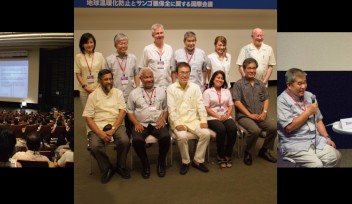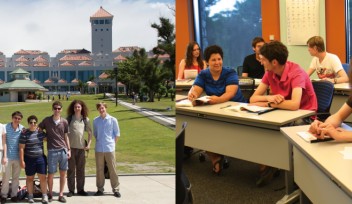Global study finds increased female and youth legislative representation may improve SDG performance

As part of the Okinawa Institute of Science and Technology’s (OIST) SDG initiative, researchers from OIST and the Institute for Global Environmental Strategies (IGES) have studied the composition of national legislatures from more than 100 countries and found that those with higher female and youth representation perform better in achieving the 17 SDG goals and 169 targets.
The study involved cross-disciplinary collaboration between researchers in marine ecology, environmental policy, and political science, and revealed the trade-offs between environmental and socio-economic SDGs in the policy making process, and the choices countries have made on the different paths towards achieving the global goals.
The article titled “The relationship between female and younger legislative representation and performance on the Sustainable Development Goals (SDGs)” was recently published in the journal Environmental Research Letters and coauthored by Dr. Dewi Langlet, a scientist in the Evolution, Cell Biology and Symbiosis Unit at OIST, together with Ms. Nobue Amanuma, Deputy Director, and Dr. Eric Zusman, Research Leader, at the Integrated Sustainability Centre at IGES.
Females and youth are currently underrepresented in many parliaments, including Japan, which has one of the lowest numbers of female parliamentary members and a high average age of cabinet members. The authors hope that their results can help motivate countries to increase diversity in their legislatures and potentially achieve better SDG performance.
The researchers also examined the performance of countries on different types of SDGs. “An interesting finding is that when we separate the environmental goals from socio-economic goals, we find that female and young parliamentarians do not have the same effect on achieving these two different types of SDG goals. For example, a greater percentage of female parliamentarians positively affects the performance of socio-economic goals, but doesn’t affect the performance of environmental SDGs,” Dr. Langlet explained.
“This means that there is a divide or trade-off between socio-economic SDGs and environmental SDGs, especially in developed countries that tend to have very high scores on social and economic goals, but lower scores for environmental goals,” Ms. Amanuma said. “It’s a big global challenge and it’s why countries need to turn trade-offs between these two into synergies.”
The researchers point out that if trade-off challenges are not properly resolved, increasing females and youth in parliaments will not necessarily mean that we can achieve the SDGs. Furthermore, as the 2030 deadline for achieving the SDGs approaches, we urgently need a more balanced approach to reach them, or even one in which environmental related SDGs such as those associated with climate change, biodiversity, and sustainable consumption and production, are prioritized. “Our study shows the limit to the current approach to sustainable development, where countries can cherry pick what to work on and what not to work on,” Ms. Amanuma stated.
Further studies can explain why nations with a higher proportion of young and female legislators are more successful in achieving SDGS and explore how the increased presence of these demographics in local governments can impact sustainable development. Such research could reveal similar trends across different regions and promote stronger links between socio-economic and environmental objectives.
Article Information
Research Unit
For press enquiries:
Press Inquiry Form














